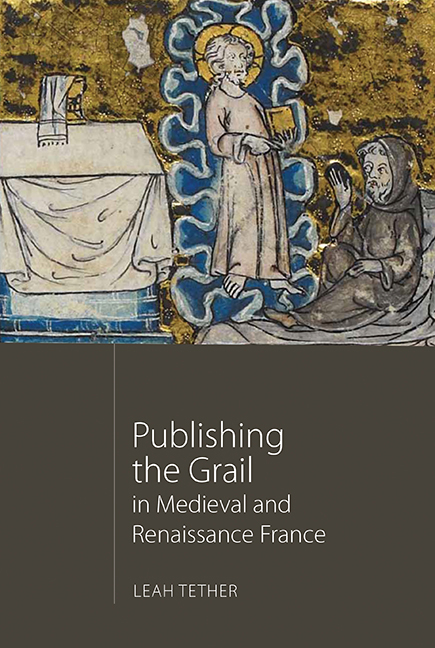Book contents
- Frontmatter
- Contents
- List of Illustrations
- Acknowledgements
- List of Abbreviations
- Miscellaneous Frontmatter
- Introduction: Grail Literature in France c. 1180–1530
- 1 Publishing in the Middle Ages and the Renaissance
- 2 Blurbing the Grail
- 3 Disclosing the Author
- 4 Re-packaging the Grail
- 5 Patronage and Promotion
- Conclusion
- Appendix: Timelines of Composition and Production
- Bibliography
- Index
- Arthurian Studies
- Frontmatter
- Contents
- List of Illustrations
- Acknowledgements
- List of Abbreviations
- Miscellaneous Frontmatter
- Introduction: Grail Literature in France c. 1180–1530
- 1 Publishing in the Middle Ages and the Renaissance
- 2 Blurbing the Grail
- 3 Disclosing the Author
- 4 Re-packaging the Grail
- 5 Patronage and Promotion
- Conclusion
- Appendix: Timelines of Composition and Production
- Bibliography
- Index
- Arthurian Studies
Summary
Much scholarship on medieval authorship focuses specifically on textual evidence – that is, what the text itself says about an author. Scribes and planners are thus often neglected as agents of composition and reception, and seen rather as ‘mechanical means’ through which details of authorship are transmitted, to borrow Matthew Fisher's terminology. This chapter therefore attempts a distinctive analysis, one that aims to show that the medieval publishers (including scribes) of French Grail literature adopted strategic and deliberate tactics in the disclosure of authorship in their editions. These strategies, I argue, reveal important developments in the social and cultural positioning of authorship during the period under consideration in this book. My primary concern, therefore, is to understand whether the author gradually gained a consistent position within the manuscript publication of French Grail texts, in effect establishing a standard for the print industry which followed, or whether such trends in fact remained specific to certain texts, workshops and traditions, or even to particular authors themselves. A secondary benefit of viewing the consumers of these texts through the eyes of the publishers who tailor products on their behalf, or even at their behest, is the generation of important insights into medieval audiences’ perceptions of Grail authors, as well as indications of whether knowledge of authorial identity actually mattered to these audiences. Medieval publishers, after all, were literate, and must therefore also be counted among the primary audiences for the texts they published.
Modern readers, of course, are accustomed to the notion of authors occupying a place of prominence in printed editions of texts, typically being named on the front cover, title page and spine. Medieval texts transmitted in manuscripts, however, do not usually accord the names of authors the same method of presentation. A notable amount of medieval literature is, for example, anonymous. And even when authors are named by having been, for instance, interwoven into the main body of text, name-checked in a scribal preface or colophon, or referred to by a pseudonym, they actually often claim to be handing down something from another auctor, rather than creating it themselves. The purpose of this often appears to be to lend to the text, as Marie-Dominique Chenu points out, a notion of greater authority and authenticity.
- Type
- Chapter
- Information
- Publishing the Grail in Medieval and Renaissance France , pp. 63 - 108Publisher: Boydell & BrewerPrint publication year: 2017



